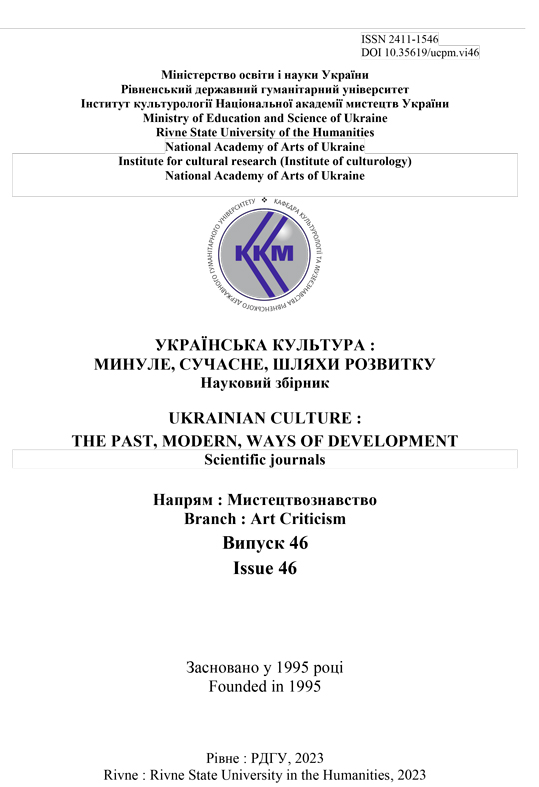HISTORICAL AND WORLD-VIEWING FOUNDATIONS OF THE CREATION OF «MAMAIANA» – A SERIES OF SCULPTURE WORKS BY VOLODYMYR NAKONECHNYY, DEDICATED TO THE MAMAYU COSSACK
DOI:
https://doi.org/10.35619/ucpmk.vi42.569Keywords:
folk painting, the image of a Cossack with a bandura, innovation in art, Cossack Mamai in sculpture, Volodymyr Nakonechnyy.Abstract
Formulation of the problem. A striking feature of popular folk paintings is the canonical consistency of their compositional structure and the variable observance of their main figurative components. Similar works include the famous painting «Cossack Mamai», which has been in Ukrainian art for several centuries; at least from the turn of the 17 th-18 th centuries. and up to the first quarter of the 21 st century. Despite the significant predominance of paintings, researchers quite often come across sculptural works depicting Cossacks in three-dimensional space. Self-made folk craftsmen made such
«mamais» mostly from clay, wood, and relatively soft rocks (such as limestone). Sculptural «mamais» are compositional analogues of similar pictorial works, found in the 19 th century and in more distant times. A natural question arises: from what time period can we talk about the appearance of sculptural images of the «Cossack Mamai» type. And what were the relationships between the pictorial (planar) and sculptural (volumetric) images of the bandurist Cossack.
The research methodology consists in identifying common typological features between V. Nakonechny's «mamais» and sculptural works that were created within the framework of Mongolian and Kalmyk cultures, which in the past closely interacted with Ukrainian. Both of these related peoples practice Buddhism in the form of Tibetan Lamaism. Special attention was paid to the influence of their religious beliefs on their traditional folk and professional art.
Scientific novelty. Despite the noticeable increase in the popularity of the image of the «Cossack Mamai», as an established symbol of the defender of the native land and the bearer of the Ukrainian national character, the subsequent recording and publication of similar works, which are kept mainly in inaccessible private collections, continues. Considering the fact that many such works are undated, or are copies of older ones, there are significant problems with establishing the true evolution of their figurative, and in particular – compositional, systems. The task of this study is to establish the hronological sequence of the evolution of the image of the «Cossack Mamai» from the point of view of V. Nakonechny.
Practical use. This study is a contribution to the identification of historical factors that influenced the formation of the unique emotional and mental identity of the Ukrainian people and the formation of its national character.
Prospects for further research. Considering the presence of the image of the «Cossack Mamai» in Ukrainian art during at least the last four centuries (from the 18 th to the 21 centuries, and the growth of its popularity during the current liberation struggle, it is necessary to continue further thorough study of this unique phenomenon of national culture.




